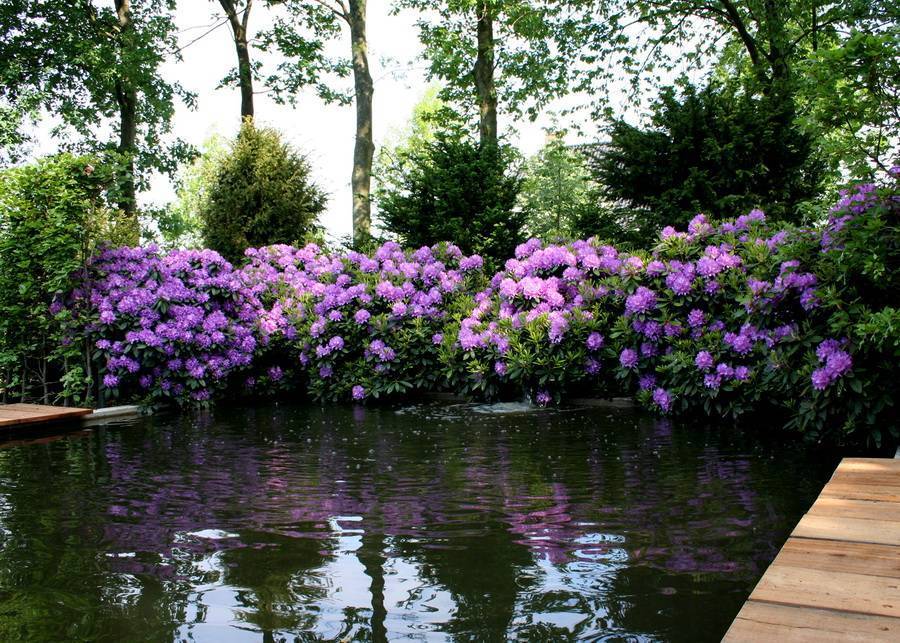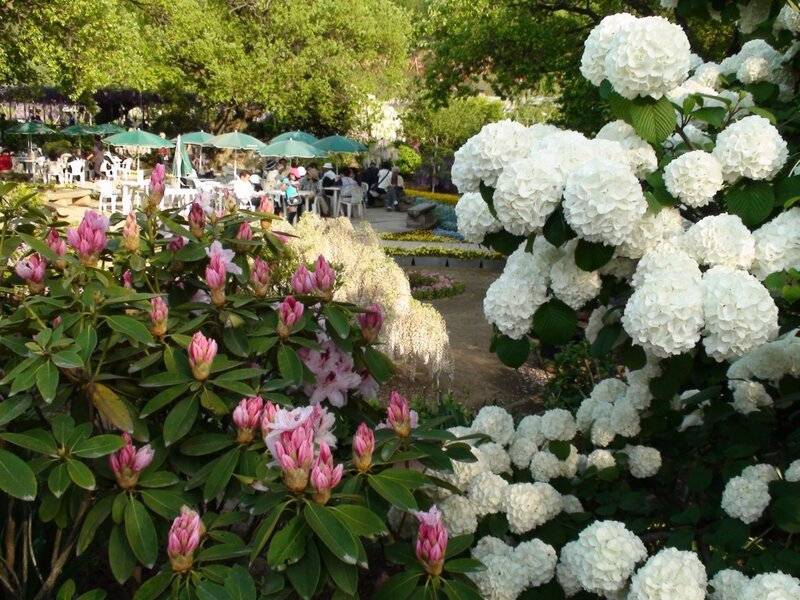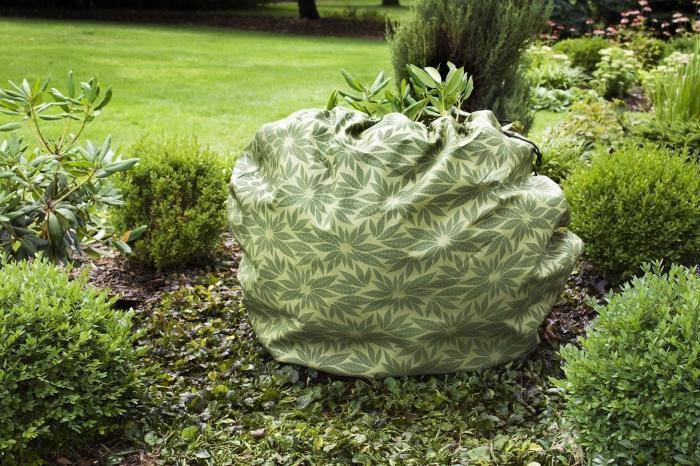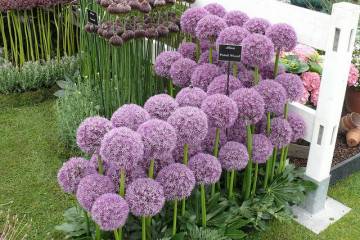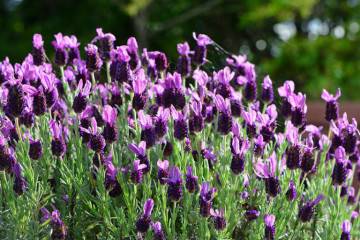Rhododendron: planting and care in the open field
Content:
- General landing rules
- When and how to plant rhododendrons outdoors
- Rhododendron: planting and care in cold climates
- What year after planting rhododendron blooms
- What can you combine rhododendron with in a flower garden?
- Reproduction methods
- Pruning
- How to transplant a rhododendron to a new location
- Flower care in winter
- Problems, diseases and pests
Most rhododendrons are shrubs that, during the flowering period, are abundantly covered with lush, rose-like inflorescences of white, pink, lilac, red, purple. Thanks to breeders, modern varieties have received yellow and orange colors. Among the representatives of this plant, there are both evergreen varieties, adapted only to warm climatic conditions, and capable of wintering well in harsh conditions.
General landing rules
Rhododendrons, the cultivation and care of which in the open field require compliance with a number of necessary rules, can be planted in spring and autumn. In any case, this is done when the weather is warm enough and the soil is not at risk of frost. In different regions of the country, these may be different time periods.
In summer, planting a rhododendron can only be done when the plant is not in the flowering phase. When a rhododendron blooms, it is not disturbed by a change of location, so as not to harm the plant. This can be done only after the bush has completely faded, having waited an additional couple of weeks.
When and how to plant rhododendrons outdoors
Before planting a rhododendron in the garden, it is worthwhile to understand in advance the conditions of its cultivation and choose a suitable place. In addition, such nuances as the time of planting the seedling, the quality of the soil on the site, the observance of the rules of watering, which should be familiarized with in advance, are important. As for the transplantation of rhododendron, which was grown in an apartment as an indoor flower, the same agricultural rules apply here.
Optimal planting time
The earliest planting, in mid-April, can be carried out in the southern regions (Krasnodar Territory, North Caucasus). In the middle lane, planting is carried out in early May, in Siberia, in the Urals, Leningrad region - a couple of weeks later. For planting in autumn, the period from September to the end of October will be optimal.
Site selection
The decorative qualities of the shrub require planting it in a place accessible for viewing. However, it should be remembered that we are talking about the rhododendron, a rather whimsical plant. Therefore, the site should be chosen especially carefully.
A cool, shady location or space that is open to diffused sunlight but protected from gusts of wind and drafts is preferred. The northern zone of the site is suitable, the presence of a reservoir is desirable. If there is no water nearby, then the bushes will have to be sprayed weekly before flowering.
How to water properly
You can understand that the plant suffers from a lack of water by the appearance of the leaves - they droop, turn from glossy matte, gradually lose color and crumble.
During the flowering stage and immediately after its completion, there is an increased need for moisture - the root system must not be allowed to dry out. To do this, 1-2 times a week, about 1-1.5 buckets of settled water are carefully poured into the trunk circle near the bush.
In hot dry weather, more frequent watering with additional spraying every 2-3 days in the early morning or late evening is recommended.
Starting in August, watering is reduced to 1 time per week, and towards the end of September rhododendron is watered once every two weeks. This approach avoids secondary growth of shoots.
Wet or dry place
When the soil chosen for planting is light and permeable, this leads to a chronic lack of moisture. In such an area, the plant should be regularly watered with soft, preferably rainwater.
You can cover the area around the bush with a layer of pine bark mulch. Due to this, in the summer, the land will not dry out so quickly after watering.
The lack of water that occurs when planting in heavy, clay soil is much more dangerous for the rhododendron. Stagnant moisture will lead to the cessation of root development and their decay. To avoid this, it is recommended to plant the shrub on a gentle slope and drain the soil well.
Landing pit and soil
Before proceeding with the preparation of the planting pit, you need to know what the actual size of the root ball is: its size should be 2 times larger. To fill the pit, a soil mixture with a high acidic index (in the range of 4.5-5.5 pH) is used. It can be made independently from peat, coniferous soil and sand in equal proportions.
If the groundwater level is high at the landing site, then a good drainage layer is laid on the bottom of the pit. After the root ball is in the planting pit, and the free space is filled up, the soil is tamped tightly so that there are no voids and "pockets" around the rhizome.
Upon completion of planting work, the trunk circle is mulched with peat chips.
Rhododendron: planting and care in cold climates
In order not to be disappointed in growing rhododendron in the middle lane, it is important to choose the right variety. There are many cold-resistant deciduous varieties adapted even for the climatic zone of the Urals and Siberia. Caring for a rhododendron includes a number of rules that even a beginner can follow:
- Maintain the acidity of the soil, avoiding the ingress of ash, dolomite flour, lime into the soil.
- Do not loosen the soil around the planting, instead mulching is best.
- Protect from direct sunlight, covering with cloth or gauze if necessary.
- Use a standard watering pattern.
When planting a rhododendron, proceed as follows:
- Choose a suitable location, at least 1 meter away from other trees, whose roots can compete with the plant for moisture.
- Prepare the soil by mixing peat with garden soil and needles, and additionally apply a mineral fertilizer with a complex composition.
- Prepare the landing pit and, if necessary, fill it with drainage.
- The root ball of the seedling is placed in the hole so that the seedling itself takes a strictly vertical position.
- The prepared soil is poured around the rhizome, without deepening the root collar of the bush - it should be at ground level.
- The soil is tamped and watered.
To prevent their appearance, the shrub is sprayed with monophosphate or potassium sulfate. After spraying, watering the plant is prohibited, even if the weather is dry.
What year after planting rhododendron blooms
In many ways, the onset of the first flowering period for a seedling depends on the selected variety, natural climatic, as well as man-made conditions.
Normally, subject to proper agricultural practices in planting and caring for a young rhododendron, it will bloom from about the 4th year of life. If already an adult bush has been transplanted, flowering may occur earlier.
Gardeners who have tried to grow rhododendron from seeds will see a flower on it no earlier than in 5-7 years.
What can you combine rhododendron with in a flower garden?
A group planting of several different varieties of rhododendron with different flowering periods will look amazing and feel good. If you want variety, then you can plant nearby decorative dwarf conifers, which will provide natural acidification of the soil with their crumbling needles.
You can choose a hydrangea as a neighbor. Its panicle varieties are suitable for deciduous rhododendrons, and tree hydrangeas go well with evergreen varieties.
Hydrangeas in the same flower garden with rhododendrons will fill the pause in flowering in the second half of summer, and according to agrotechnical requirements, they completely coincide with them. However, when placing them together, it should be possible to freely approach the hydrangea for annual pruning.
In addition, you can use unpretentious large and small shrubs: elderberry, hazel, chokeberry, irga, spirea, stefanandra, broom. From herbaceous plants, shade-tolerant ferns, liverwort, and horny goat weed are recommended. Perennial phlox, tiarella, saxifrage will fit perfectly.
Reproduction methods
Garden rhododendrons can be planted by layering, cuttings and sowing seeds. To germinate cuttings in the spring or at the very end of summer, next to the bush, they dig a groove 15-20 cm deep, bend one of the branches to it and sprinkle it with earth. To speed up the process, you can slightly damage the layer of bark on the shoot, which ends up in the soil. Rooting lasts for 2 years.
Cuttings for reproduction of rhododendron are harvested in early June from annual shoots. The lower leaves are removed from the branches cut at an angle of 45 degrees 10-12 cm long, leaving only 2-3 in the upper part. Next, the cuttings are planted in the ground at a distance of at least 5 cm from each other, building a greenhouse above them. After about 2-3 months, the seedlings will give roots.
Seeds are planted at the end of winter in a spacious container with drainage holes, covered with foil. After about 1.5 months in a dry, light place, they germinate (the film must be periodically opened to ventilate and moisturize the soil). The seedlings are grown at a cool temperature. It will be possible to plant seedlings in the ground only after 3 years.
Pruning
Rhododendron requires proper pruning. This action stimulates the development of the bush, the emergence of new shoots.
In the spring, sanitary pruning of frozen, dried, dead branches is carried out. Periodically, it is necessary to carry out anti-aging pruning, removing all shoots, including old ones.
Caring for a rhododendron after the flowering period involves removing wilted inflorescences. In general, each variety has its own pruning scheme, which is associated with the flowering period and adaptation to different climatic conditions.
How to transplant a rhododendron to a new location
The main signal for transplanting is the unsatisfactory condition of the shrub for several years: it blooms poorly, winters unsuccessfully, and recovers for a long time.
In this case, it is imperative to change the location of the rhododendron:
- They take the necessary tools: a shovel, a pitchfork, a wheelbarrow.
- If the soil is dry, then it is slightly moistened so that the dug root ball does not crumble.
- Dig a rhododendron bush to the width of the crown or a little more to a depth near the bayonet of a shovel.
- Carefully remove the rhododendron with a lump with a pitchfork, taking care not to damage the roots.
- The plant is loaded into a wheelbarrow and transported to a new prepared place.
- Carefully roll the bush from the wheelbarrow into the pit.
Flower care in winter
Cold resistance of rhododendron varies depending on the variety, so it is important to know how to properly care for rhododendron closer to winter.
Deciduous shrubs (for example, pointed rhododendron, Canadian, Kamchatka and others) tolerate frosts more easily, and evergreens (such as Lita, Chanel, Erato and others) can dry out in winter due to lack of moisture. To prevent this from happening, in late autumn, water-charging watering of the rhododendron must be carried out. After such an event, the trunk circle is covered with pine bark to a height of 20 cm.
You can also protect the rhododendron with agrotextile, which perfectly permeates water, air and protects from low temperatures and cold winds. A rhododendron tree or bush is wrapped with a cloth 2-3 times and fixed with a cord at the trunk. Another great way to protect yourself from frost is to cover it with ordinary coniferous paws.
Problems, diseases and pests
The most common diseases for rhododendron are root rot. They cope with them with the help of preventive actions: with the onset of heat, the aerial part of the bush is treated with fungicides (for example, Fitosporin M), colloidal sulfur is introduced into the near-trunk circle.
Having found the first signs of the disease, they are sprayed with Bordeaux liquid. Fungicides are also used in the fight against rust and leaf spot as described on the package. At the same time, the diseased parts of the plant are destroyed.
The main enemies of rhododendrons among pests can be considered spider mites and rhododendron bugs. They get rid of them with the help of biological and chemical preparations, carrying out repeated treatments even after the destruction of insects at intervals of 5-7 days.
Whatever the difficulties of planting and caring for a rhododendron outdoors, the beauty of the "rosewood" prompts gardeners to take on its cultivation. Observing the above rules, you can breed this flowering shrub in the country as a single plant or as part of a landscape composition. Although having mastered agricultural technology, it is already difficult to limit oneself to planting only one bush or one variety of this plant.

